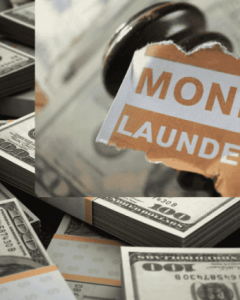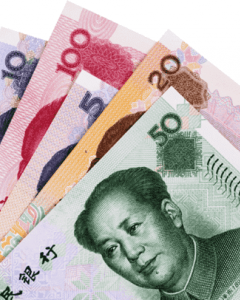Economic Struggles: Eurozone Witnessing Lowest Loan Levels in Two Decades
The European Central Bank (ECB) recently released the findings of its quarterly survey, revealing a significant decline in borrowing demand from businesses in the Eurozone.
2. Decreased Investment Demand
3. Real Estate Market Downturn
4. Pessimism Among Households
3. Real Estate Market Downturn
4. Pessimism Among Households
The European Central Bank (ECB) recently released the findings of its quarterly survey, revealing a significant decline in borrowing demand from businesses in the Eurozone. In fact, the current levels are at their lowest since 2003, a period marked by a sharp increase in interest rates by the ECB. This unexpected drop in loan demand during the second quarter of the previous year surpassed even the predictions made by banks. The ECB attributes this decline to rising interest rates and a simultaneous decrease in investment demand.

Additionally, the real estate market in the Eurozone is experiencing a general downturn, which is impacting lending activities. While demand for home loans decreased in the second quarter, the decrease was not as significant as in previous quarters. This observation aligns with the overall trend of growing pessimism among households in the Eurozone. As households become more cautious, their demand for consumer credit has also decreased.
The Frankfurt-based ECB responded to the surge in inflation following the Russia-Ukraine conflict by rapidly raising borrowing costs. This move aimed to control hyperinflation, as food and energy prices skyrocketed. However, its unintended consequences have led to adverse effects on borrowing demand within the Eurozone.
To better understand the implications of these findings, it is essential to delve deeper into the factors that contribute to the Eurozone's current loan landscape. This comprehensive analysis will provide valuable insights into the potential future trends of borrowing activities.
1. Impact of Rising Interest Rates
The increase in interest rates by the ECB played a significant role in weakening the borrowing demand in the Eurozone. Higher interest rates make borrowing more expensive and dissuade businesses and households from seeking loans. As a result, this decline signals a potential slowdown in economic growth within the region.
2. Decreased Investment Demand
Simultaneously, the decrease in investment demand in the Eurozone has contributed to the drop in borrowing. Businesses are likely to be more cautious when investing in new projects or expanding their operations due to the uncertain economic outlook. This decline in investment further amplifies the downward pressure on the loan market.
3. Real Estate Market Downturn
The Eurozone's real estate market is experiencing a period of weakness, mirroring the broader economic trends. This decline in the real estate sector has directly affected home loan demand. However, it is worth noting that the decline in the second quarter was less severe compared to previous quarters. This nuanced decline suggests that while the real estate market is struggling, it is showing some signs of stabilizing.
4. Pessimism Among Households
Increasing pessimism among households in the Eurozone is another underlying factor contributing to the decline in borrowing demand. As uncertainty looms over the economic future, households are becoming more cautious and reducing their consumption. This cautious approach extends to their borrowing habits, as they prefer to avoid unnecessary debt. Consequently, the demand for consumer credit has dwindled.
The implications of these factors are substantial. The Eurozone's economic growth heavily depends on businesses having access to financing, and any decrease in borrowing demand could hinder future growth prospects. Moreover, a weakened loan market can have a ripple effect on various sectors and potentially impede economic recovery.
Policymakers and financial institutions now face the challenge of devising strategies to revive borrowing demand. Lowering interest rates could be a possible intervention to encourage borrowing. Additionally, economic stimulus initiatives that boost consumer confidence and promote investment could revitalize the loan market.
The Eurozone is currently grappling with the lowest borrowing demand levels in 20 years, largely due to rising interest rates, decreased investment demand, a weakening real estate market, and growing pessimism among households. These factors have had significant and adverse impacts on the loan market, necessitating prompt action from policymakers and financial institutions. By addressing these challenges, the Eurozone can pave the way for a resilient recovery and sustained economic growth.
Economic Struggles: Eurozone Witnessing Lowest Loan Levels in Two Decades
Breaking: Ten Arrested in Singapore for Multi-Billion Dollar Money Laundering Case
In a significant development, ten individuals have been arrested in Singapore for their involvement in a multi-billion dollar money laundering case. Stay updated with the latest news and investigations on this high-profile case.
In a significant development, ten individuals have been arrested in Singapore for their involvement in a multi-billion dollar money laundering case. Stay updated with the latest news and investigations on this high-profile case.
Read moreEuropean Shares Surge as Eurozone Inflation Drops: Will ECB Halt Interest Rate Hikes?
European shares surge as eurozone inflation drops, raising hopes of ECB halting interest rate hikes. Despite a poor performance, softer inflation data leads to gains in real estate and technology shares.
European shares surge as eurozone inflation drops, raising hopes of ECB halting interest rate hikes. Despite a poor performance, softer inflation data leads to gains in real estate and technology shares.
Read moreUK Regulators Shake Up Financial Sector with Stricter Diversity Standards
The Financial Conduct Authority (FCA) and the Prudential Regulation Authority (PRA) in the UK are proposing stricter diversity standards to address workplace bullying and sexual harassment in the financial sector. Learn more about the measures aimed at creating a safer and inclusive environment within organizations.
The Financial Conduct Authority (FCA) and the Prudential Regulation Authority (PRA) in the UK are proposing stricter diversity standards to address workplace bullying and sexual harassment in the financial sector. Learn more about the measures aimed at creating a safer and inclusive environment within organizations.
Read moreSweden's Bankruptcy Rates Skyrocket by 14%, Raising Concerns for Labor Market
Concerns for the labor market in Sweden as bankruptcy rates skyrocket by 14%. Recent data from UC highlights the downturn in sectors such as construction, hospitality, and restaurants.
Concerns for the labor market in Sweden as bankruptcy rates skyrocket by 14%. Recent data from UC highlights the downturn in sectors such as construction, hospitality, and restaurants.
Read moreUSD Resurgence: Dominating Global Financial Landscape
Explore the remarkable resurgence of the USD in the global financial landscape, its impact on other currencies, and implications for businesses and individuals in international trade and investment.
Explore the remarkable resurgence of the USD in the global financial landscape, its impact on other currencies, and implications for businesses and individuals in international trade and investment.
Read moreChina's Economic Challenges: Preventing a Vicious Cycle with the Yuan
Explore the economic challenges faced by China, including the sacrifice of the Yuan to prevent a vicious cycle of low demand and declining output. Learn why experts believe immediate action is crucial.
Explore the economic challenges faced by China, including the sacrifice of the Yuan to prevent a vicious cycle of low demand and declining output. Learn why experts believe immediate action is crucial.
Read moreUSD Near Longest Bull Streak in 9 Years as Optimistic Economic Data Supports
Discover why the USD is on the verge of its longest rising streak since 2014, driven by encouraging US economic data. Although this trend raises doubts about future interest rate hikes by the US Federal Reserve, the Yuan is facing pressures with falling values domestically and internationally due to increasing capital flow concerns and a widening bond yield gap with developed economies. Stay informed on these developments impacting global currency markets.
Discover why the USD is on the verge of its longest rising streak since 2014, driven by encouraging US economic data. Although this trend raises doubts about future interest rate hikes by the US Federal Reserve, the Yuan is facing pressures with falling values domestically and internationally due to increasing capital flow concerns and a widening bond yield gap with developed economies. Stay informed on these developments impacting global currency markets.
Read moreWeakness of Yen Reflects Interest Rate Difference, Poses Valuation Challenges
Explore the factors behind the weakness of the yen and its impact on global economies. The valuation challenges arise from the interest rate difference between Japan and other markets. Gain insights into the concerns of investors and policymakers surrounding this devaluation trend.
Explore the factors behind the weakness of the yen and its impact on global economies. The valuation challenges arise from the interest rate difference between Japan and other markets. Gain insights into the concerns of investors and policymakers surrounding this devaluation trend.
Read moreChina's PBoC Takes Action as Yuan Reaches 16-Year Low
As the yuan hits its lowest level in 16 years, the People's Bank of China (PBoC) is implementing measures to counteract the ongoing decline. Explore the PBoC's efforts to address the currency's depreciation, which is comparable to levels seen during the 2007-2008 global financial crisis. Stay updated on China's attempts to stabilize its currency amidst challenging economic circumstances.
As the yuan hits its lowest level in 16 years, the People\'s Bank of China (PBoC) is implementing measures to counteract the ongoing decline. Explore the PBoC\'s efforts to address the currency\'s depreciation, which is comparable to levels seen during the 2007-2008 global financial crisis. Stay updated on China\'s attempts to stabilize its currency amidst challenging economic circumstances.
Read more













